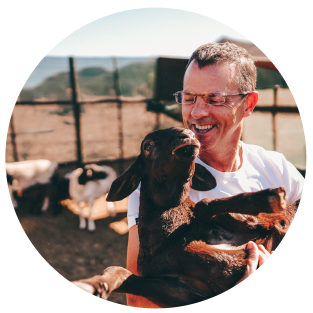Dear valued client,
Thank you for your ongoing support as an IntelliFarm™ client. As an organization, we respect your privacy and are committed to keeping the personal information of our clients secure and confidential. As you know the Protection of Personal Information Act (POPIA) came into effect on 01 July 2021.
The Protection of Personal Information Act, Act No. 4 of 2013 (POPIA) aims to protect the personal data of all persons and further outlines how institutions should safeguard, collect, process, store, share and manage this information.
The information we collect
We collect and process your personal information in accordance with an agreement signed between ourselves and your respective establishment.
This information is processed for the purposes of, among other things, charging service fees, logging of calls for maintenance requests, emergency maintenance requests and general owner queries after hours, as required in Law and generally in the pursuit of the legitimate interests of our clients. For this purpose, we may collect and process your full names, date of birth/ identity number/ passport number, cell phone numbers, telephone number, email addresses, physical and postal addresses, bank account details, among other personal and biometric information.
"Process" means anything that is done with your personal information whether or not by automated means, including but not limited to, organising, collecting, recording, storing, structuring, adapting, and transmission.
How we use your information
We use your personal information only for the purposes for which it was collected.
Cookie Policy
We may place small text files called ‘cookies’ on your device when you visit our website. These files do not contain personal data, but they do contain a personal identifier allowing us to associate your personal data with a certain device. Many websites use cookies and you can find out more about them at All About Cookies.
All about cookies
Why do we use cookies?
These files serve a number of useful purposes for you, including:
- ensuring the website functions correctly;
- granting you access to restricted content;
- tailoring our website's functionality to you personally by letting us remember your preferences, location or device type;
- improving how our website performs;
- analysing the use of the website;
- understanding who our audience is, so that we can provide content most relevant to you;
- allowing third parties to provide services to our website; and
- helping us deliver interest-based advertising where appropriate in compliance with the applicable laws.
The types of cookies we use
We use different types of cookies on our website. Some of these cookies are placed by us, while others are placed by our third-party plug-ins, suppliers or advertisers. These cookies may be deleted from your device at different times, such as at the end of your browsing session (when you leave the website) or after a pre-set amount time, or they may persist on your device until you delete them.
We use the following types of cookies on our website:
- Necessary cookies:These are cookies that allow our website to perform its essential functions. Without these cookies, some parts of our websites would stop working.
- Functional cookies: These are cookies that monitor how our website is performing, and how you interact with it. We use them to know how best to improve our website or services.
- Third party cookies:These are cookies that some of our business partners use on our website. We have no access to or control over them. Information collected by any of these cookies or widgets is governed by the privacy policy of the company that created it, and not by us.
Deleting cookies
Your internet browser generally accepts cookies automatically, but you can often change this setting to stop accepting them. You can also delete cookies manually. You can read how to do this at https://www.digitaltrends.com/computing/how-to-delete-cookies/.
Deleting or no longer accepting cookies may prevent you from accessing certain aspects of our website where cookies are necessary or cause the website to forget your preferences. Deleting cookies may not prevent you from seeing advertisements on our website, but such advertising may be less relevant to you.
Disclosure of information
We may disclose your personal information to our service providers who are involved in the delivery of products or services to you. Third parties and service providers are obligated, in their own right, to ensure that they further process your information in accordance with the POPI regulations and protocols. We may also disclose your information where we have a duty to disclose such information in terms of Law.
Information Security
We are legally obliged to provide adequate protection for the personal information we hold and to prevent unauthorised access and use of personal information. We will, on an ongoing basis, continue to review our security controls and related processes to ensure that your personal information remains secure. Further information as to our security policies and procedures is contained in our POPI Privacy Policy.
Your Rights in terms of Section 15 of POPIA
You have the right to ask us to update, correct or delete your personal information (in accordance with the POPI Policy and PAIA Manual) and we would appreciate it if you could ensure that your personal information is accurate and updated.
You further have the right to have your personal information processed only in accordance with the conditions of the POPIA, to ask what information of yours is held by the community scheme, to object on reasonable grounds to the processing of personal information, to submit a complaint to the Information Regulator regarding personal information that has been handled incorrectly and to be notified if personal information has been acquired by an unauthorised person.
Contact us
Should you have any questions relating to our Privacy Statement and ancillary documentation, please contact us at info@intellifarm.co.za.
Kind Regards
Sectional Title Support Service

















